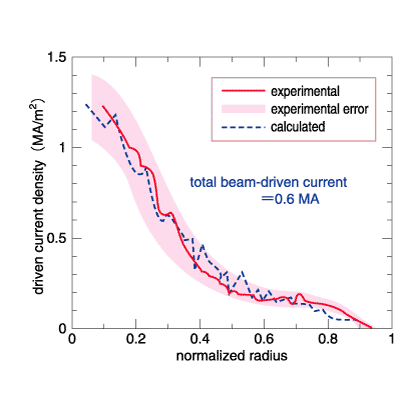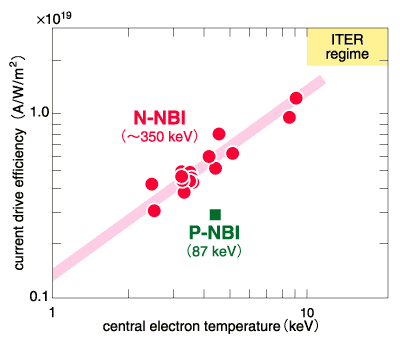Injection of high energy neutral particle beams (NBI) into a plasma is currently used as an effective non-inductive current drive technique (no transformer method) in fusion tokamak research. Injected neutral particle beams transfer their energies to electrons and ions in the plasma, causing a current in the plasma. The beam injection technique is also an effective means of plasma heating.
As part of the R&D program to explore steady-state tokamak operation in JT-60, we have developed, for the first time in the world, a negative-ion based neutral beam injection system (N-NBI) with a high performance of 500 kV and 10 MW, capable of driving a plasma current in a high temperature and high density fusion plasma, and have carried out extensive experiments on current drive and plasma heating in JT-60. Figure 2-1 shows the experimental and calculated beam-driven current profiles. The current profile is centrally peaked as expected, and the experimental driven current density and the shape of the profile are both in good agreement with theoretical calculations within experimental error. Figure 2-2 shows the dependence of the current drive efficiency on central electron temperature. The efficiency is defined as the magnitude of driven current per unit electric power per unit area. The current drive efficiency increases with the central electron temperature. It is also improved with the beam energy as indicated by comparison with a result of a positive-ion based NBI experiment. As you see in Fig. 2-2 the experimental result agrees well with the theoretical calculation. From these results, we can expect the current drive performance of N-NBI required for the operation of a future fusion reactor like International Thermonuclear Experimental Reactor (ITER), namely at an energy level of 1 MeV and with an electron temperature of higher than 10 keV, will be attainable. |

